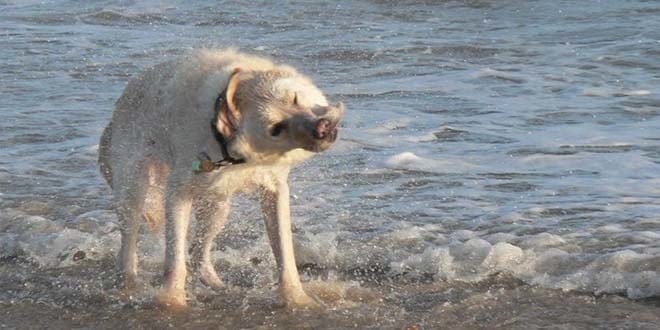Follow the steps to teach a dog to swim. Majority of the dogs are born without knowing how to swim especially water retrievers like Chesapeake Bay retrievers and Labradors and they have to be taught swimming when they are puppies or young adults. If you want to teach a dog to swim, you have to train it which is not daunting task as you only need to have ample water for the dog to swim so that his feet do not touch the bottom of the water and the dog should also be willing to learn swimming. Dogs possess an excellent capacity and physical capability which enables them to learn the swimming lesson very quickly.
If you want to teach a dog to swim you can do it easily with the following steps which includes-
Step 1- preparation for swimming- firstly you should put the vest, collar and life jacket of the dog for preparing him to swim. Let him walk for a while with his jacket until he is comfortable and relaxing and shows the sign of being well prepared when he starts wagging his tail.
Step 2- location selection- you have to be very careful while selecting a location as the dog may experience difficulty in approaching the water if he had only interacted with water in the bath tub. Thus at first you have to be careful while introducing you dog to the water that has no currents or waves and the water body should be quiet and small like a pond or kiddie pond. You should avoid water with discernible current but you can have a stream with grassy bank.
Step 3- gradual approach- always let your dog go into the water slowly so that he can sniff the water and play with it as he wants but you should always avoid chlorinated pool water. You should lead and coax your dog if you want to teach a dog to swim.
But if your dog stops while going into the water then let him relax. If swimming is making your dog feel uncomfortable then you will know it from his rigid posture which includes low and forward head and tail positioned downwards in between his legs.
The dog may even whine and grimace. If you notice any of these postures then make him feels comfortable by talking slowly to him and don’t allow the dog to come out of water. Gradually stroke the chest, neck and head of the dog to make him relax until he starts wagging his tail again.
Step 4- proper encouragement- encourage your dog to approach the water gradually as he put his front feet in the water and make him follow you into the water and reward him for taking initiatives for swimming. You can offer him a floating toy as a reward that is stuffed with treats as he will love it.
Step 5- prepare for dog’s reaction– wait to see the reaction of the dog when he first leaves the bottom of the water. Hold the dog under his midsection with your arms while placing a hand at his ribcage’s bottom and the other hand on his stomach. You should also encourage your dog to use his hind legs as using his front paws only will make him too tired very fast.
If you want him to put his neck forward then lure him with food and toy that will enable him to keep his head on the water’s level. If you want to teach a dog to swim, you should always support him for making him relaxed so that the dog can use all his legs for swimming. After he starts swimming without nervousness or encouragement then remove the leash from his collar.


